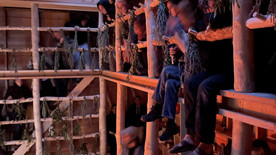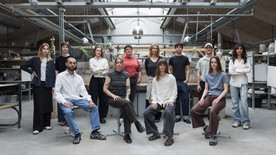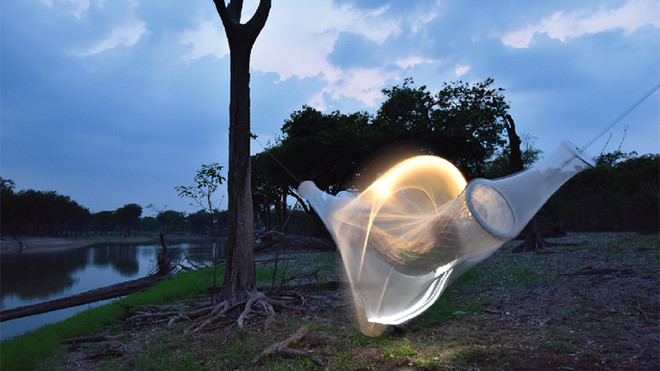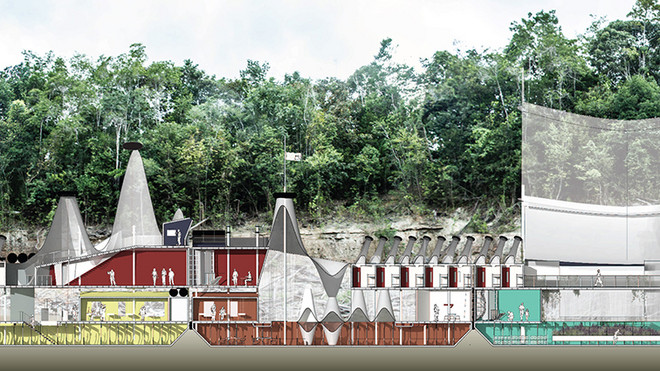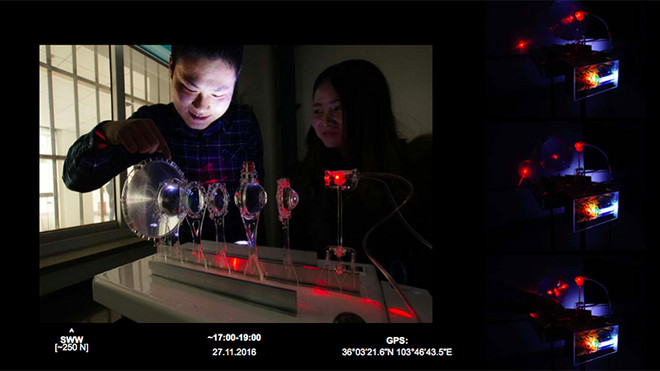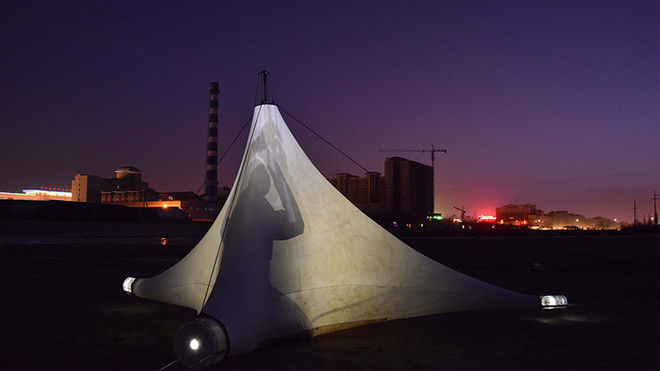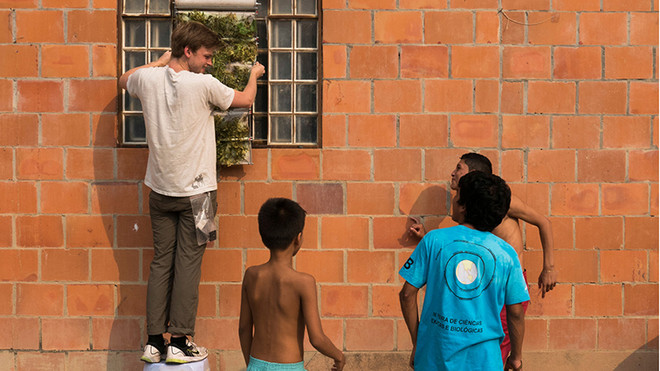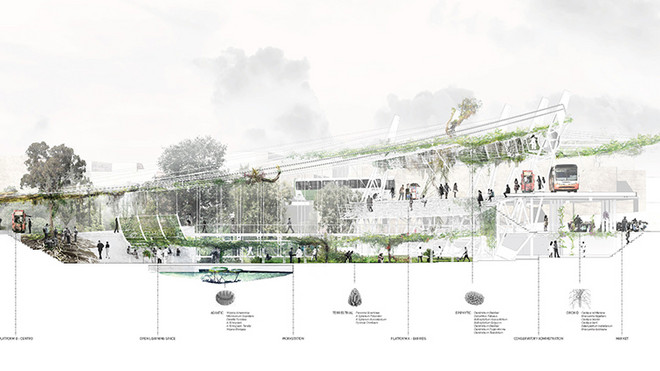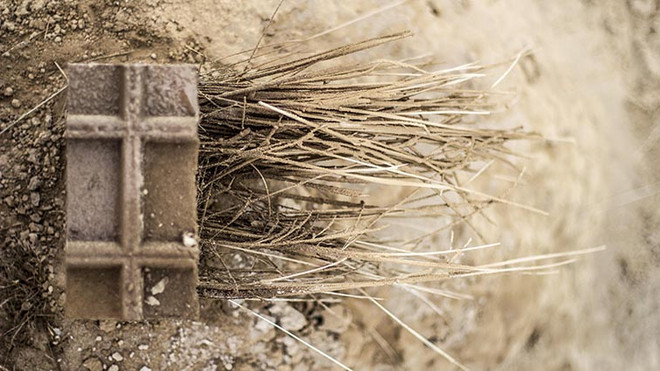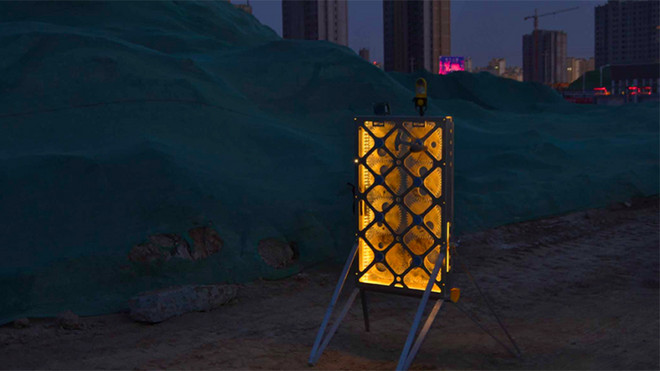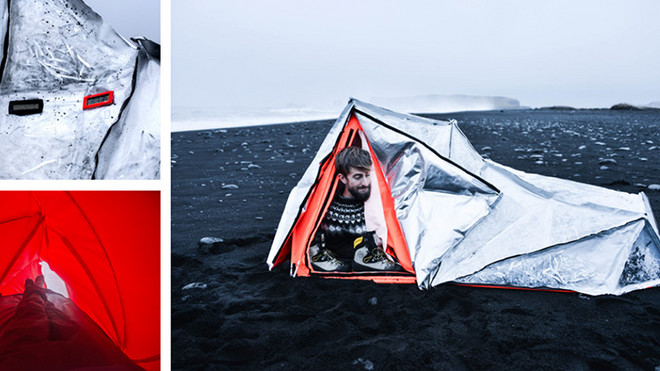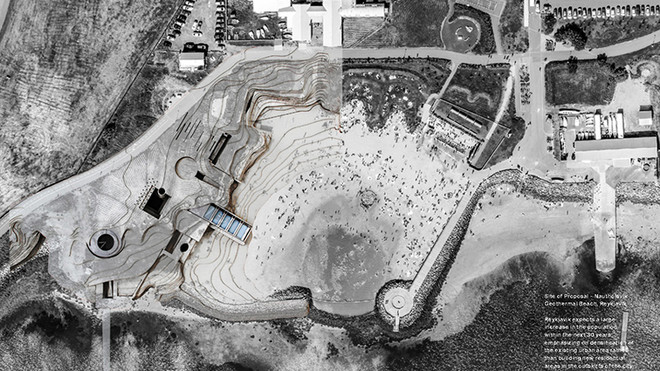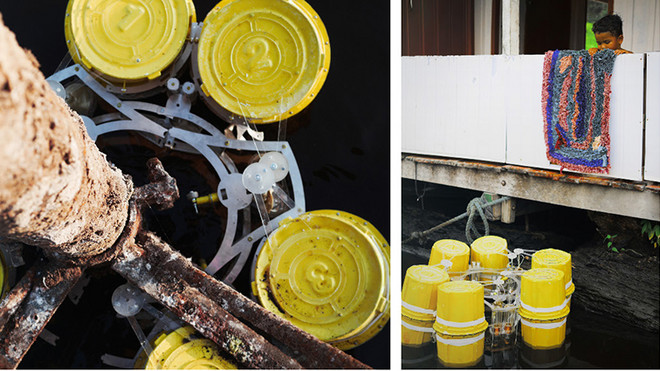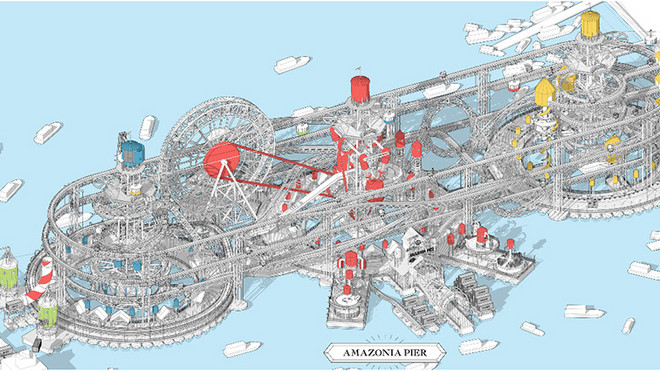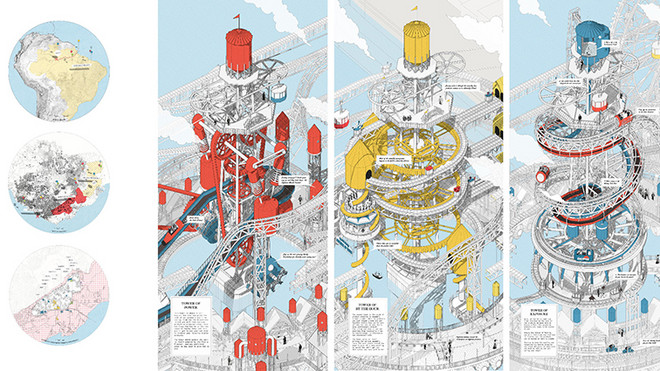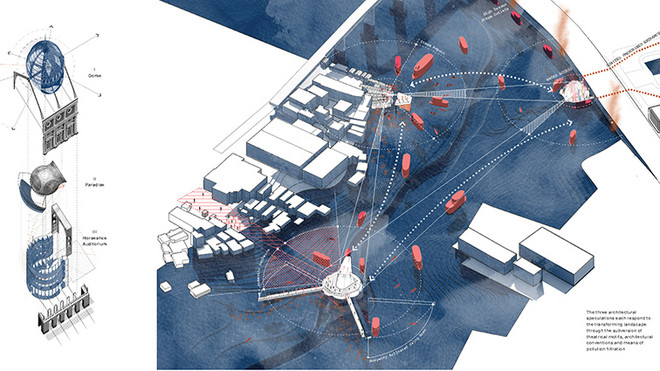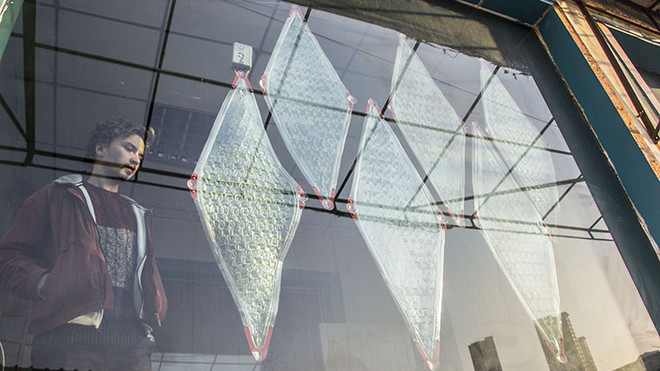
About the programme
The programme is part of the 2-year Master's programme at the school of Architecture. Read more about the programme's academic content and structure here.
Programme description
Programme description
This Master programme pursues to explore the intersection between, technology, artistic sensibility, culture and environment. Through a site-specific approach, we aim to respond to present and future global challenges through research by design and direct on-site involvement in the form of active fieldwork to remote world locations where prototypes are put to the test and buildings are designed base on on-site experience.
In close collaboration with local communities, science and manufacturers, this Master programme engages with testing new architectural sustainable approaches, from component to building design, and a considerate position towards designing for people and communities.
We mediate our presence in our environment via design and technology, often disregarding the environmental impact of our design decisions. It is our intention to investigate the design potential in working with technology not only as a performance orientated design parameter, but also as a process charged with aesthetic potential and cultural implications with sustainable aims, from building scale all the way to detail.
Architecture today often abandons site-specific knowledge and local design traditions that have allowed for sustainable and resilient environments. Parallel to this reality, science and technology have a larger vocabulary of approaches and solutions than what is currently applied to building and component design.
The programme offers future architects platforms of collaboration with scientific and technological fields of knowledge as an active part of design, to enrich architecture’s spatial vocabulary and to broaden its performance and sustainability in today’s challenging realities.
There is a strong focus on site-specific design, achieving this through direct engagement and fieldwork to environments which are out of balance. These exceptional scenarios, be it flooding, extreme cold or heat, high pollution and health risk zones, to name a few, are used as test beds for an architectural design to be developed.
This methodology allows for a real-scenario, on-site research by design process that spans from prototypes and building components to large scale building design, in collaboration with local culture, the scientific and technological community and the world of practice and manufacture, both local and global.
In this programme students acquire, not only a site-specific design methodology that allows for an architecture fully informed by local conditions, but also knowledge and solutions, which can be applied to many contemporary contexts, both at home and abroad.
The course starts at the beginning of September until the end of June and the month-long fieldwork is from mid-November to mid-December. The faculty does not cover any costs, but supports students with recommendations and platforms for funding applications.
Structure and Content
Structure and Content
The two-year programme is structured as a two-semester per year continuum, where the tasks and projects are linked in sequence and require full participation from beginning to end.
During the first semester, investigations and study on the proposed theme/site, generates areas of interest to be explored through 1:1 prototypes challenging present building component solutions, and engaging in environmental simulations. These 1:1 prototypes and components will be transported to the regions in question, tested and assessed during the expedition, which allows for concrete performance studies, and collaboration with the local community and institutions. Based on the experiences and results students develop an architectural brief for the second semester. Students should note that the expeditions will take us to remote world sites for a period of 3 to 4 weeks, both fascinating and challenging in their scope. All activities are funded by students although we offer external funding lists, which students can apply to.
During the second semester, the brief will be developed in detail as an architectural proposal, in collaboration with the network acquired during the site visit, and with in-house and international experts. Building design is coordinated as a holistic approach between artistic design and performance, grounded on the experience of the expedition, grounded on having been there, and understanding the socio economic and cultural context.
Students can also choose to develop a building component proposal for the second semester, engaging with Danish and international manufacturers and institutions, pushing some of their discoveries towards applicable manufacture orientated solutions.
There will be a strong focus on manufacture and representation methods, welcoming all types of media and formats to communicate the projects in the clearest and most effective way possible.
Furthermore, sustainable approaches combined with challenging spatial formalizations are crucial to the ethos of the program.
The year will be scheduled around weekly group design discussions, one to one tutorials, and frequent reviews, courses and seminars, often attended by external collaborators and researchers. Studio culture, high production standards and daily presence are imperative to enhance a culture of collective knowledge, sharing, and cohesive collaboration between researchers, tutors and students at the school.
Courses
Courses
Courses are specific to each semester and take advantage of the large knowledge base in the Institute of Architecture and Technology, at the Royal Danish Academy and from our large international network. From courses in light, materials and innovative structures, to digital manufacturing and simulation tools, they support and enhance the research orientated design curriculum.
Furthermore, the large national and international network that this program provides, also translates into lectures, courses and workshops with industry, research and innovation.
One of the distinguishing factors of this course, are the yearly fieldwork trips, which are not thought as mere study trip, but as a hand-on, substantial part of the curriculum. They allow for onsite testing of hypothesis and prototypes, specific local knowledge and collaboration, courses, visits and workshops, as well as a vital network that will inform the building or component design throughout the course.
On the expedition students practice setting up scientific experiments in the field as well as recording, logging and analysing data. Data that forms the foundation of each student project in the second semester. Simultaneously the collected data is used to prepare of a scientific report. In this process students work closely with internal researchers to develop and assess a qualified hypothesis.
Digital fabrication and performance assessment
The course introduces students to core concepts and techniques for digital fabrication, performance-led design, sensing, and methods of experiment design and assessment. There is an emphasis on design task, sensing methodology and visualization of data results. Through the strategic linking of making and testing of an experimental prototype, the workshop supports students in developing integrated understandings that connect making, purposeful performance and assessment.
Visual Registration: Mapping methodologies
This workshop introduces methods and concepts in registration and representational techniques for mapping. It will introduce students to underlying fundamentals around photography, digital registration and mapping, including the understanding of historic impacts, the extraction of meaning from the study of the physical and social world, as well as being the generators for argumentation and proposition. Students will work with photography, as well as new digital registration techniques of drone-based photogrammetry, to make exploratory mappings.
Regenerative design
In this course, students learn to use the latest sensor technology and adopt real-time reporting of meaningful data. Students are taught how to couple an architectural prototype with environmental sensors in order to generate ecosystem, climatic, material and human physiology data. Finally, students learn how to collect data in a scientific fashion and use them for future design developments. The course is directed by associate professor Emanuele Naboni.
Critical Thinking seminar
An annual Critical Thinking seminar aims towards enriching the student’s theoretical knowledge and enhancing methodologies towards research and critical thinking. The seminar offers a continuous set of lectures, workshops and guidance from theorists that inform students work and support the development of competencies within the realm of the history of ideas.
Environmental Simulation for Sustainable Design
Students develop the ability of simulating holistically ecosystems and the human data within their project design. Plugins to model LCA, energy, thermal, comfort, radiation and daylighting simulation tools are used to sustain creative design conceptions. The gaps in between the fields that need to be part of sustainable Design is addressed and bridged in the course.
Computational Fluid Dynamics
In this course students are taught the use and application of Computational Fluid Dynamics for indoor and outdoor environments; the course will teach students to model and analyse heat- and airflow in and around buildings. The use of computational analysis methods and state of the art software will be integrated in the student’s project work as a tool to inform the design.
Language
Language
The course accommodates Danish and English speaking students. It is taught in English, due to the large international network that will be informing the students throughout the course.
Use the links below to see our videos and publications on our YouTube channel and at Issuu.com.












